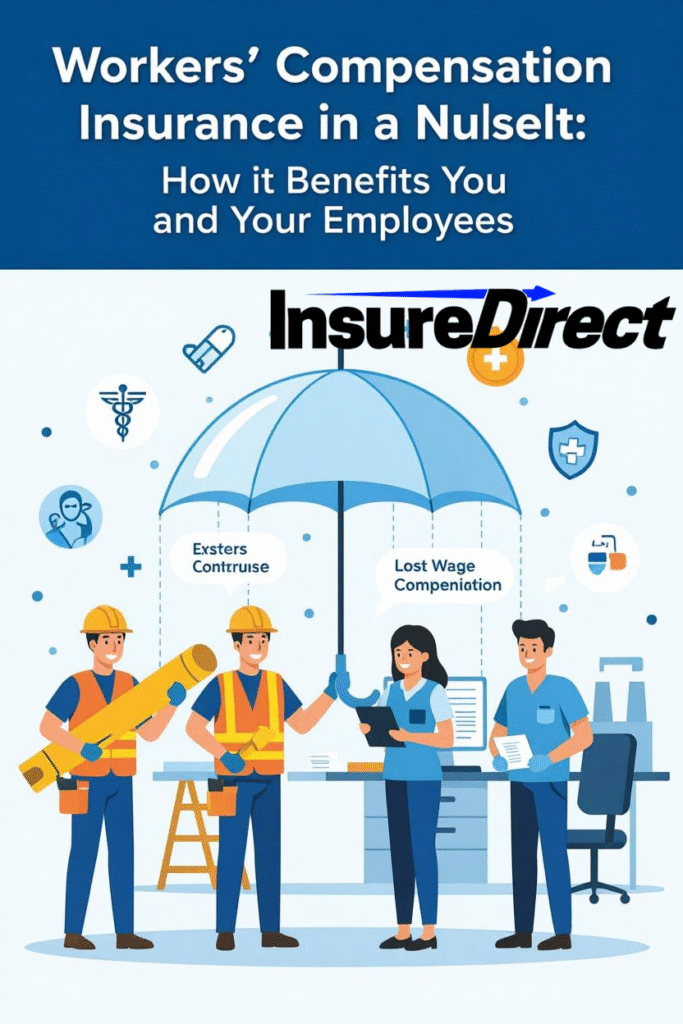What Is Workers’ Compensation, Anyway?
Imagine workers’ comp as an umbrella over your payroll and sanity. Hurt employees? Medical expenses, lost pay replacement, disability compensation, and survivors’ benefits if death results. Who wouldn’t want that? Any employer with a pulse and employees—retail, tech, construction, restaurants, offices—needs coverage.
What it doesn’t cover: pranks gone wrong, intentional actions, or backyard yoga accidents.
Average Workers’ Comp Expenses in 2025
Figures are fun. Figures scare accountants. On average, US employers contribute roughly $1,128 per employee annually (~$94 per month). But that’s a median: hazardous trades like transportation or construction climb higher, while white-collar industries float lower. Premiums are influenced by industry, state, company size, and claims history.
State-by-State Workers’ Comp Expenses
High-Cost States
- California: ~$1,600 annually per employee. Regulations, medical costs, and claims drive premiums up.
- New York: 7.1% surcharge, regulation complexity, and legal fees make coverage pricey.
- Hawaii: High premiums due to healthcare quirks.
Moderate-Cost States
- Colorado: $759 per employee annually; balanced safety and cost.
- Texas: $1,116 per employee; deregulated market keeps prices reasonable.
- Missouri: 5.3% decrease from the previous year; still affordable.
Low-Cost States
- Oregon: $0.91 per $100 payroll, down 3.2%; 12-year trend of falling rates.
- Wisconsin: 3.2% decrease effective Oct. 2025.
- North Carolina: 5% rate hike effective Oct. 2025; premiums fluctuate.
Why Workers’ Comp Costs Differ
Factors that affect premiums:
- State Regulations: Laws and assessment rates differ.
- Industry Risk: Construction vs. clerical; riskier jobs cost more.
- Claims History: Frequent claims raise premiums.
- Medical & Indemnity Costs: High local medical rates increase overall premiums.
Tips for Cutting Workers’ Comp Costs
- Workplace Safety Programs: Fewer accidents = lower premiums.
- Claims History Management: Maintain a clean slate.
- Shop Around: Compare insurance quotes; one size doesn’t fit all.
- Know Your State Laws: Avoid fines and penalties.
- Bundle Policies: Combining general liability and workers’ comp often reduces costs.
- Employee Training: Well-trained employees = safer workplace.
Hidden Costs and Pitfalls
- Misclassifying Employees: Leads to overpayment.
- Delayed Claims Reporting: Missed deadlines = denied coverage.
- Ignoring Safety Updates: OSHA compliance affects premiums.
- Not Reading the Fine Print: Policies are detailed; missing clauses can cost.
Real-Life Scenarios in 2025
- Retail Store: Anti-slip mats reduce injuries → premiums drop 15%.
- Construction Company: PPE and training reduce claims and accidents.
- Office Startup: Workers’ comp pays for employee injuries; lawsuit avoided.
Additional Considerations in 2025
- Remote Work: Office-at-home injuries typically excluded; ergonomic add-ons possible.
- State-Specific Adjustments: Premiums may change mid-year.
- Seasonal Industries: Payroll variability affects premiums.
- Multi-State Employers: Policy design must consider each location.
Calculating Your Premium
- Classify employees correctly.
- Quantify risk by industry.
- Calculate payroll basis.
- Check claims experience.
- Apply state rates.
- Add endorsements (voluntary coverage, additional reporting).
- Shop around for insurers.
- Repeat annually—nothing stays the same.
Workers’ Comp vs Other Insurance
| General Liability | Customer injuries | Workers comp = employee injuries |
| Professional Liability / E&O | Mistakes in services | Workers comp = workplace injury |
| Property Insurance | Building/property damage | Workers comp does not cover this |
Understanding differences avoids gaps in coverage.
FAQs
Q: Are small businesses exempt?
Some one-person firms are exempt in certain states, but voluntary coverage is highly recommended.
Some one-person firms are exempt in certain states, but voluntary coverage is highly recommended.
Q: Can I bundle insurance?
Yes, bundling policies often reduces cost.
Yes, bundling policies often reduces cost.
Q: Do safety programs lower premiums?
Often, yes—insurers favor proactive measures.
Often, yes—insurers favor proactive measures.
Q: How often should I review my policy?
At least once a year, industry or state changes may require mid-year adjustments.
At least once a year, industry or state changes may require mid-year adjustments.
Conclusion
Workers’ compensation insurance in 2025 is mandatory and a financial lifesaver. Premiums vary by state depending on regulation, industry, payroll, claims history, and safety initiatives. Savvy employers actively manage classification, safety programs, and coverage options to reduce premiums without leaving staff exposed. Non-compliance is a risk no business should take—think of it as an investment in peace of mind, not just paperwork.
Call InsureDirect for Workers’ Compensation Insurance
InsureDirect.com
Corporate Home Office
618 South Broad Street, Lansdale, Pennsylvania 19446
Email: contact@insuredirect.com
Phone: (800) 807-0762 ext. 602
Corporate Home Office
618 South Broad Street, Lansdale, Pennsylvania 19446
Email: contact@insuredirect.com
Phone: (800) 807-0762 ext. 602
Keep your home safe, secure, and covered with complete protection from InsureDirect—because your home deserves nothing but the best.

